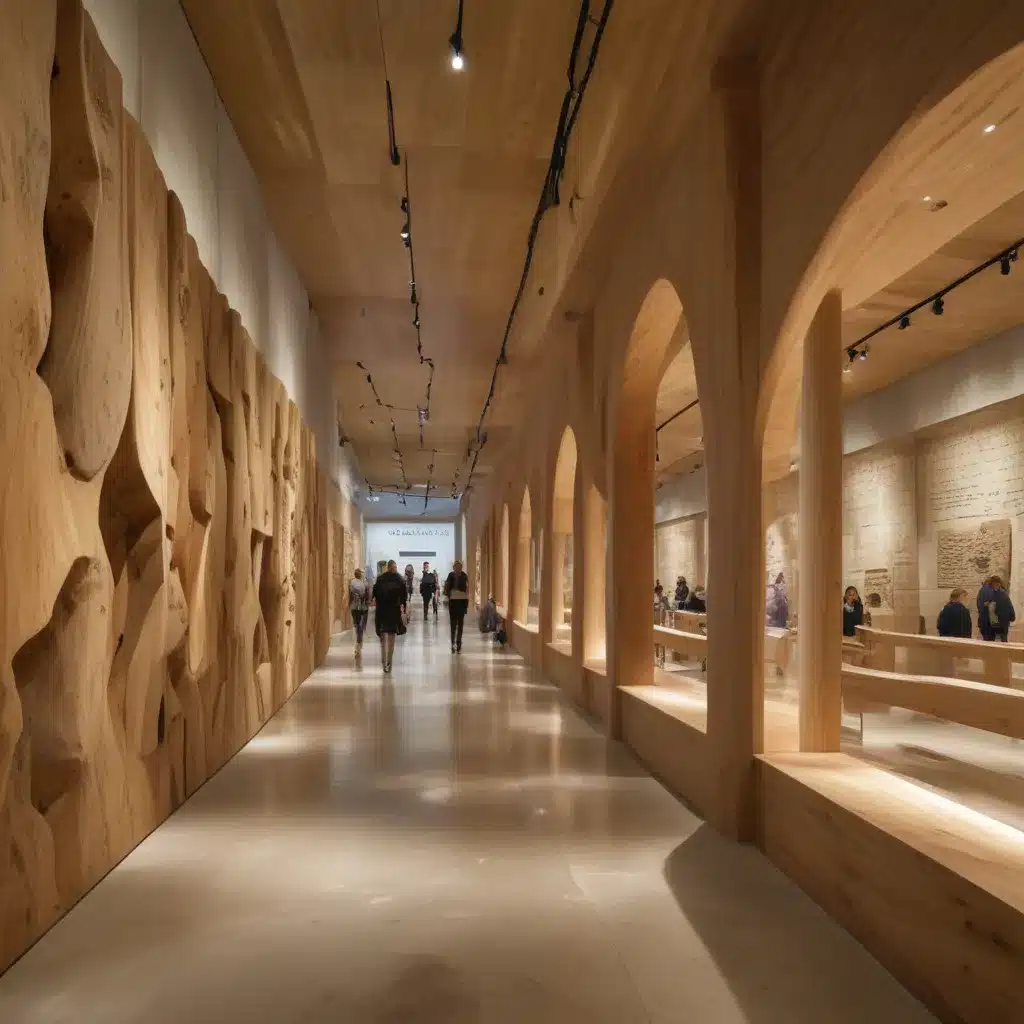
Elevating the Guest Experience at Cultural Attractions Through Innovative Interpretive Design
As an experienced hospitality consultant, I’ve had the privilege of working with some of the world’s most prestigious resort properties and spas. In our 15 years in luxury hospitality… However, in recent years, I’ve found myself increasingly drawn to the world of cultural attractions, where innovative interpretive design is redefining the visitor experience.
Now, this might seem counterintuitive for a luxury resort…
At the heart of this transformation is a deep understanding that cultural institutions are not just repositories of artifacts and information. They are living, breathing entities that have the power to transport, educate, and inspire. By harnessing the principles of luxury hospitality – exceptional service, immersive environments, and personalized engagement – cultural attractions are elevating their guest experience to new heights.
Embracing the Visitor Journey
Effective interpretive design begins with a comprehensive understanding of the visitor journey. Much like a luxury resort, a cultural attraction might want to consider every touchpoint, from the moment a guest arrives to the moment they depart. This holistic approach ensures that the experience is seamless, engaging, and tailored to the needs and interests of each individual.
According to Nuğoteh, founder of ROOM FOR MAGIC, “Community engagement is not just about getting feedback; it’s about moving at the pace of the community and really understanding their lived experiences.” This sentiment applies equally to cultural attractions, where the visitor experience might want to be shaped by the diverse backgrounds, perspectives, and learning styles of the audience.
By employing user research, empathy mapping, and co-creation strategies, interpretive designers can craft experiences that resonate on a deeply personal level. This might involve incorporating multilingual content, offering sensory-friendly programming, or designing intuitive wayfinding systems – all with the goal of making the visitor feel welcomed, valued, and empowered to explore.
Cultivating Immersive Environments
One of the hallmarks of luxury hospitality is the ability to transport guests to another world, where every detail contributes to a cohesive and captivating experience. Cultural attractions are increasingly embracing this ethos, leveraging interpretive design to create immersive environments that blur the lines between the physical and the virtual.
As Ed Rodley, co-founder of The Experience Alchemists, explains, “Playful engagement is about creating a ‘magic circle’ that invites visitors to suspend their disbelief and become fully immersed in the narrative.” From interactive exhibits that harness the power of gaming and storytelling to augmented reality experiences that overlay digital content onto the physical space, cultural attractions are redefining the boundaries of the traditional museum visit.
By seamlessly integrating technology, sensory elements, and narrative, interpretive designers can craft experiences that not only educate but also inspire emotional connections. This might involve designing an immersive theater that transports visitors to a pivotal moment in history, or creating a tactile, multisensory display that allows visitors to engage with artifacts in a more intimate and meaningful way.
Empowering Visitor Participation
Luxury hospitality is all about personalized service and tailored experiences, and cultural attractions are increasingly adopting this mindset. Rather than a one-size-fits-all approach, interpretive design is embracing the idea of active, participatory engagement, where visitors are empowered to shape their own learning journey.
As Ivan Schwartz, founder of StudioEIS, notes, “Sculptors are visual storytellers, and their work can have a profound impact on how we understand and interpret history.” This principle extends beyond the realm of traditional exhibits, as cultural attractions leverage interpretive design to create opportunities for visitors to directly contribute to the narrative.
This might involve designing interactive stations where visitors can virtually “sculpt” their own interpretation of a historical figure, or creating collaborative art projects that encourage visitors to leave their mark on the space. By fostering a sense of ownership and agency, cultural attractions can inspire deeper levels of engagement, learning, and personal connection.
Integrating Sustainability and Community
As the world becomes increasingly conscious of the need for sustainable practices, cultural attractions are embracing interpretive design as a means of addressing environmental and social concerns. By aligning their physical spaces, programming, and messaging with principles of sustainability, cultural attractions can not only reduce their ecological impact but also empower visitors to become active stewards of the world around them.
“Story-based design is about creating experiences that are rooted in authenticity and the unique character of a place,” explains Alan Reed, president and design principal of GWWO Architects. ”It’s about using architecture, landscape, and exhibitions as a seamless expression of a cultural institution’s mission and values.”
This might involve designing exhibitions that highlight the importance of biodiversity and conservation, or incorporating sustainable building materials and energy-efficient systems into the overall interpretive experience. By weaving sustainability and community engagement into the fabric of the visitor experience, cultural attractions can foster a deeper understanding and appreciation for the world we share.
Elevating the Hospitality Experience
As cultural attractions continue to evolve, the principles of luxury hospitality are becoming increasingly essential to their success. By embracing innovative interpretive design, these institutions are not only enhancing the visitor experience but also positioning themselves as dynamic, forward-thinking destinations that cater to the needs and aspirations of a discerning, experience-driven audience.
At The Landing Resort & Spa, we believe that the future of cultural attractions lies in the integration of exceptional service, immersive environments, and personalized engagement. By collaborating with industry-leading interpretive designers, we can help our clients craft experiences that captivate, educate, and inspire, all while upholding the highest standards of hospitality excellence.
Whether you’re a museum, historic site, or cultural heritage organization, the opportunity to elevate the guest experience through innovative interpretive design is ripe for the taking. By embracing the principles of luxury hospitality, you can transform your institution into a might want to-visit destination, where every interaction leaves a lasting impression and inspires a lifelong connection to the rich tapestry of human history and creativity.
Tip: Always keep abreast of the latest luxury hospitality trends to enhance guest experiences

